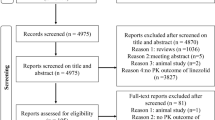Abstract
Objective: This study was performed to assess the electrocardiographic safety and pharmacokinetics of desloratadine in combination with the CYP3A4 inhibitor ketoconazole.
Design: A randomised, placebo-controlled, third-party—blind, 2-way crossover study.
Participants: 24 healthy volunteers (12 men, 12 women; age 19 to 50 years).
Interventions: 7.5mg of desloratadine orally per day in combination with placebo or with 200mg of ketoconazole every 12 hours for 10 days. After a minimum 7-day washout period, participants received the alternative treatment.
Main outcome measures: ECG parameters.
Results: Comparable maximum corrected QT (QTc) intervals were observed after coadministration of desloratadine and placebo or ketoconazole (431 and 435 msec, respectively). The desloratadine/ketoconazole combination did not induce any statistically significant or clinically relevant changes in QTc, QT, PR or QRS intervals compared with desloratadine alone; ventricular rate was slightly slower when desloratadine was given with ketoconazole. At steady state, coadministration of ketoconazole resulted in no significant change in area under the desloratadine concentration-time curve (AUC) from 0 to 24 hours compared with desloratadine/placebo. Coadministration of desloratadine and ketoconazole resulted in a 1.3-fold increase in desloratadine maximum concentration (Cmax) that was not clinically relevant. The most common adverse event was headache, reported in 42 and 38% of individuals, respectively, after coadministration of desloratadine/placebo and desloratadine/ketoconazole. There were no reports of dizziness or syncope.
Conclusion: Coadministration of desloratadine and ketoconazole was well tolerated and was associated with minimal increase in AUC and Cmax. The combination did not induce any clinically relevant electrocardiographic changes.





Similar content being viewed by others
References
Nightingale CH. Treating allergic rhinitis with second-generation antihistamines. Pharmacotherapy 1996; 16: 905–14
Yap YG, Camm AJ. Arrhythmogenic mechanisms of non-sedating antihistamines. Clin Exp Allergy 1999; 29 Suppl. 3: 174–81
Taglialatela M, Castaido P, Pannaccione A, et al. Cardiac ion channels and antihistamines: possible mechanisms of cardiotoxicity. Clin Exp Allergy 1999; 29 Suppl. 3: 182–9
Taglialatela M, Pannaccione A, Castaido P, et al. Molecular basis for the lack of HERG K+ channel block-related cardiotoxicity by the H1 receptor blocker cetirizine compared with other second-generation antihistamines. Mol Pharmacol 1998; 54: 113–21
Crumb Jr WJ, Wible B, Arnold DJ, et al. Blockade of multiple human cardiac potassium currents by the antihistamine terfenadine: possible mechanism for terfenadine-associated cardiotoxicity. Mol Pharmacol 1995; 47: 181–90
Zimmermann M, Duruz H, Guinand O, et al. Torsades de pointes after treatment with terfenadine and ketoconazole. Eur Heart J 1992; 13: 1002–3
Tsai W-C, Tsai L-M, Chen J-H. Combined use of astemizole and ketoconazole resulting in torsade de pointes. J Formos Med Assoc 1997; 96: 144–6
Dumaine R, Roy M-L, Brown AM. Blockade of HERG and Kvl.5 by ketoconazole. J Pharmacol Exp Ther 1998; 286: 727–35
Kreutner W, Hey JA, Anthes J, et al. Preclinical pharmacology of desloratadine, a selective and nonsedating histamine H1 receptor antagonist. 1st communication: receptor selectivity, antihistaminic activity, and antiallergenic effects. Arzneimittelforschung 2000; 50(4): 345–52
Meltzer EO, Premier BM, Nayak A. Efficacy and tolerability of once-daily 5mg desloratadine, an H1-receptor antagonist, in patients with seasonal allergic rhinitis. Assessment during the spring and fall allergy seasons. Clin Drug Invest 2001; 21(1): 25–32
Kreutner W, Hey JA, Chiu P, et al. Preclinical pharmacology of desloratadine, a selective and nonsedating histamine H1 receptor antagonist. 2nd communication: lack of central nervous system and cardiovascular effects. Arzneimittelforschung 2000; 50(5): 441–8
Affrime M, Gupta S, Banfield C, et al. A pharmacokinetic profile of desloratadine in healthy adults, including elderly. Clin Pharmacokinet 2002; 41 Suppl. 1: 13–19
Affrime M, Banfield C, Gupta S, et al. Effect of race and sex on single and multiple dose pharmacokinetics of desloratadine. Clin Pharmacokinet 2002; 41 Suppl. 1: 21–28
Hey JA, Affrime M, Cobert B, et al. Cardiovascular profile of loratadine. Clin Exp Allergy 1999; 29 Suppl. 3: 197–9
Banfield C, Hunt T, Reyderman L, et al. Lack of clinically relevant interaction between desloratadine and erythromycin. Clin Pharmacokinet 2002; 41 Suppl. 1: 29–35
Allegra (fexofenadine) prescribing information. Physicians’ Desk Reference. 54th ed. Montvale, NJ: Medical Economics, 2000
Claritin (loratadine) prescribing information. Physicians’ Desk Reference. 54th ed. Montvale, NJ: Medical Economics, 2000
Acknowledgements
Supported by a research grant from Schering-Plough Research Institute, Kenilworth, New Jersey.
Author information
Authors and Affiliations
Rights and permissions
About this article
Cite this article
Banfield, C., Herron, J., Keung, A. et al. Desloratadine Has No Clinically Relevant Electrocardiographic or Pharmacodynamic Interactions with Ketoconazole. Clin Pharmacokinet 41 (Suppl 1), 37–44 (2002). https://doi.org/10.2165/00003088-200241001-00006
Published:
Issue Date:
DOI: https://doi.org/10.2165/00003088-200241001-00006




